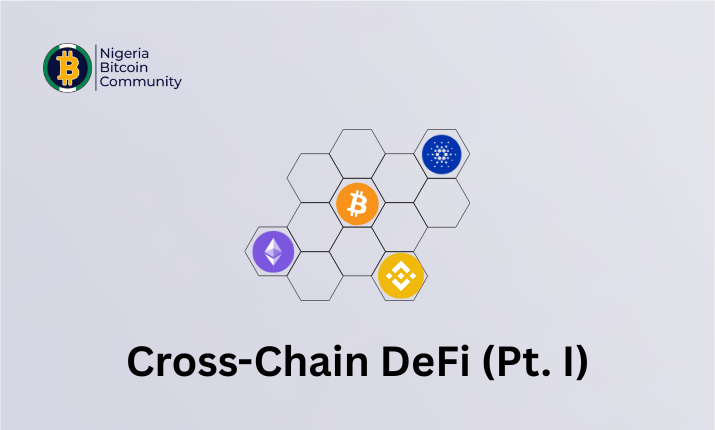The crypto space is evolving fast.
What started as simple token swaps and lending protocols on Ethereum has now grown into a multichain ecosystem.
However, with all this innovation came one significant challenge: blockchain fragmentation.
Each blockchain operates in its own isolated world.
Ethereum, Binance Smart Chain, Solana, and Avalanche all have unique assets and protocols that don’t easily talk to one another.
That’s where Cross-Chain DeFi comes in – the technology that bridges these blockchain islands and unlocks the full potential of decentralized finance.
In this post, we will explore what Cross-Chain DeFi means, how it works, why it matters, and the tools making it possible.
What is Cross-Chain DeFi?
Cross-Chain DeFi (short for Cross-Chain Decentralized Finance) refers to financial applications that allow users to move assets, liquidity, and data between multiple blockchains seamlessly.
Think of it like having the ability to send money from a GTBank account to a Zenith Bank account.
But in this case, from Ethereum to BNB Chain, or Polygon to Avalanche, without needing centralized exchanges.
Traditional DeFi (like Uniswap or Aave) used to be locked to one blockchain.
This means that if you had tokens on another chain, you had to use bridges or CEXs to access those services.
Cross-chain DeFi breaks that barrier.
Examples of Cross-Chain DeFi are:
- ThorChain (RUNE): Allows direct swaps between native assets like BTC, ETH, and BNB without wrapped tokens.
- Curve Finance: Uses cross-chain pools and bridges to connect liquidity from different chains.
- Aave and SushiSwap: Now operate across multiple blockchains, letting users lend or trade on whichever network they prefer.
Why Cross-Chain DeFi Matters
DeFi has grown into a trillion-dollar industry, but most of its liquidity and innovation remain scattered across multiple chains.
Cross-Chain DeFi changes this by:
1. Improving Liquidity Access
Assets can move freely between networks, increasing trading volume and reducing slippage.
2. Boosting User Experience
Users can interact with multiple protocols without worrying about switching chains or wallets.
3. Encouraging Innovation
Developers can build apps that tap into the strengths of multiple blockchains simultaneously.
4. Reducing Centralization Risk
With decentralized bridges and interoperability layers, users no longer need to rely on centralized exchanges for cross-chain transfers.
Essentially, it’s about making DeFi more connected, more efficient, and more open.
We will now see how cross-chain DeFi works.
How Cross-Chain DeFi Works
The backbone of cross-chain DeFi lies in interoperability protocols and bridging technology.
Let’s break it down simply:
1. Bridges
Bridges connect two blockchains, allowing users to transfer tokens between them.
For example, if you want to move USDT from Ethereum to BNB Chain, the bridge locks your Ethereum USDT and mints an equivalent version on BNB Chain.
Examples:
- Synapse
- Multichain
- Wormhole
- LayerZero
2. Interoperability Protocols
These go beyond token transfers.
They enable communication between smart contracts across different blockchain networks.
Projects like Cosmos (IBC) and Polkadot (Parachains) allow different blockchains to interact directly, not just swap tokens.
3. Aggregators
Cross-chain aggregators like LI.FI and Rango Exchange help users find the best route for moving assets or executing trades across chains.
This is similar to how flight aggregators find the best ticket deals.
4. LayerZero and Modular Solutions
Newer projects, such as LayerZero and Axelar, focus on creating universal message-passing systems that enable smart contracts to communicate securely across different chains.
Challenges Facing Cross-Chain DeFi
While the concept sounds promising, several issues still hold it back:
1. Bridge Exploits:
Many bridges have been hacked due to vulnerabilities in smart contracts or validator systems.
2. Complex User Experience:
Managing gas fees across chains and switching networks can still be confusing for beginners.
3. Scalability and Speed:
Moving data between blockchains can be slow and expensive.
4. Security Risks:
Cross-chain communication expands the attack surface, requiring better auditing and decentralized validation.
Despite these challenges, the industry is rapidly improving — and the next generation of cross-chain protocols promises to make things safer and smoother.
The Future of Cross-Chain DeFi
The future of DeFi is interconnected.
As the industry matures, we will likely see:
- A move toward Omnichain DeFi, where applications are chain-agnostic.
- Better user interfaces that hide complex cross-chain operations behind one-click solutions.
- More secure bridges built with zero-knowledge proofs and decentralized relayers.
- Integration with real-world assets (RWA) and traditional finance.
Cross-Chain DeFi isn’t just a trend; it’s the next logical step for blockchain innovation.
Conclusion
Cross-chain DeFi is breaking down the walls between blockchains, creating a more connected and fluid financial system.
It’s what will make DeFi mainstream – where users no longer need to care which chain they’re on, but only about what they can do.
In Part 2, we’ll dive deeper into Top Cross-Chain DeFi Projects to Watch in 2025, including the best tools, tokens, and protocols shaping this new era.
Now, over to you: what are your thoughts on cross-chain?
Want to learn more about DeFi and Crypto Trading?
Join our 90-Day Mentorship Program where we break down crypto, forex, and blockchain in simple, actionable lessons.



0 Comments